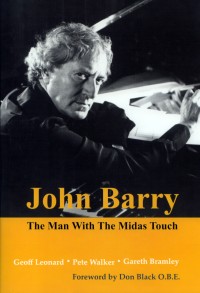(Raksin)
Analysed by Robert Walton
Robert Farnon was one of the first light orchestral composers to come up with a most original idea. He found that a complicated beginning of a piece (almost atonal) not only provided a sense of risk-taking like a high wire act, but kept the listener guessing as to where it would finally alight in a normal tonal context. His Manhattan Playboy has all the elements of such a format in which the opening bars of the actual tune are a sort of boppish free fall before landing in the safety net of the home chord. The effect of all this was mind-blowing.
The same thing effectively happens in the haunting theme The Bad and the Beautiful from the 1952 film of the same name, although this is a much slower tempo. It’s a more meandering tune than David Raksin’s masterpiece Laura. For the first few bars of The Bad and the Beautiful we’re on a restless (some might even say “reckless”) Raksin flight of fancy with the blues overtones of Harold Arlen. This is a ravishing piece of writing and I was totally captivated. After all this tension, the “sun” suddenly comes out courtesy of a French horn and we’re at last happily ensconced in a key of contentment. Still in the same key a solo violin keeps us on the straight and narrow giving an edge to the music, enticing us back to the exotic. We’re immediately whipped away from our comfort zone by a dance band-sounding muted trumpet into a repeat of that elaborate opening.
Now strong strings in close harmony play an absolutely gorgeous middle section of crying and sighing. Perhaps it should be called a “bridge of sighs”. No need to consult your physician as it’s only a case of cutis anserina (goose pimples). A perfect moment to compare the much improved recording quality of the Rose Orchestra of 1953 with that of its first attempts just ten years earlier. I’ve never quite understood why the quality of Rose’s early work, both in performance and recording quality, was sometimes not quite up to scratch on those old 78rpm discs. Other orchestras of the same period seemed to produce better results.
The sensitive violin is back for 5 bars of the start, after which the rest of the strings bring us neatly to a conclusion, and on the way, echo the opening of Artie Shaw’s Frenesi. However we’re still not quite finished as the horn quotes the opening.
This has been an extraordinarily sublime experience and one that I am unlikely to forget. Hollywood and Raksin are at their best. We owe an enormous debt to film soundtracks.
The Bad and the Beautiful (Raksin)
David Rose Orchestra
“Great American Light Orchestras”
The Golden Age of Light Music
Guild (GLCD 5105)
2 comments
-
 posted by William Zucker
Saturday, 26 August 2017 05:43
posted by William Zucker
Saturday, 26 August 2017 05:43
In this same David Rose set from which this selection comes, is another entitled "All I Desire," from the film of the same name, the theme song having been penned by one David Lieberman.
Comment Link
This represents one of David Rose's best settings, and is everything an arrangement of this nature should be. There is a recurring figure which immediately sets the mood, further accentuated by an accompanying rhythm. The melody and the accompanying elements share the honors in this setting, which once again is uniquely David Rose's, without resorting to what is commonly referred to as his "trademark."
One unfortunate feature of this is that the second presentation of the song of necessity had to be abridged for it to fit on the side of a single 78 or 45 RPM disc. When I play this on the piano, I attempt to reconstruct the missing section so that David Rose's conception may be presented as complete. -
 posted by William Zucker
Friday, 25 August 2017 13:44
posted by William Zucker
Friday, 25 August 2017 13:44
I don't find the opening of Farnon's "Manhattan Playboy" at all atonal - the very first sound is the actual keynote or tonic chord of the piece, followed by a number of harmonic sequences that eventually land us home. There are a number of far reaching harmonic digressions in the course of the piece, but nothing whatever to cause us to lose our bearings.
Comment Link
The theme from Raksin's "The Bad and the Beautiful" is quite tonally based in the key of A Flat Major as we customarily hear it (with little otherwise in common with Farnon's piece which is of a totally different ilk. I am offhandedly familiar with three instrumental versions of this theme: the one by David Rose that Bob is referring to here, which is far and away for me the best one, another by Victor Young, which is decent but does not draw me in as does the Rose version, and finally, the double length one by Percy Faith, outwardly the most spectacular but nevertheless still not offering the same emotional fulfillment that for me the Rose version offers.
I will add here that this selection originally was released as a single with the flip side featuring another cinematic theme, "Return to Paradise," authored by I forget which name; but here too, I find the Rose version to be the best amongst a group of many.
David Rose really outdid himself in these arrangements and a few others I could name, and be it noted, without any reference to his alleged "trademark" of pizzicato strings that Bob often refers to, yet still recognizably Rose's in a more subtle sense.
For once, Bob and I are at one regarding the virtues of a selection that he is writing about.
Leave a comment
Make sure you enter all the required information, indicated by an asterisk (*). HTML code is not allowed.

